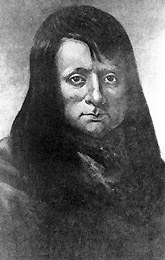What is the time period of use for the Old Spanish National Historic trail?

The period 1829 to 1848 was defined as the Old Spanish National Historic Trail period of historical significance by Congress and the National Park Service. However, use of portions of the Trail routes began long before 1829 (by Native Americans, missionaries Escalante and Dominguez, and traders such as Juan Rivera) and continued after 1848 (for instance by Mormon emigrants between Salt Lake City and Los Angeles).
The year 1829 marked the first commercial use of the trail when Mexican trader Antonio Armijo first led a mule caravan from Santa Fe to the San Gabriel Mission (near Los Angeles). This successful commercial venture led to annual mule caravans traversing the trail for the next 20 years.
What about the Native American historic use of the trail?
The Old Spanish National Historic Trail utilized an existing network of Indian trails. The Utes, Pueblos, Jicarilla Apaches, Hopis, Navajos, Paiutes, Mojaves, and Chemehuevis knew these routes long ago. Various route segments were used for seasonal hunting and gathering movements, and for trade items coming from the Pacific Ocean to the Pueblos in New Mexico and Arizona.
Who named the Old Spanish Trail?
Mexican caravans leaving Santa Fe simply referred to the route as “the trail to California.” It was American John C. Frémont who in 1844 first called the route the “Spanish Trail” on his military trip westward to Oregon and parts of California. The next year Congress printed 20,000 copies of Frémont’s report and map. It became an immediate bestseller. Frémont first reached the Spanish trail in the Mojave Desert coming down from the Sierra Nevadas and exclaiming the trail was “joyful consolation to us and the animals enjoyed the beaten track like ourselves. Relieved from the rocks and brush, our wild mules started off at rapid rate.”
Were provisions available on the trail?
This trail had neither military support nor food shops. There were no forts or soldiers to provide emergency rations. There were no cavalry units that stood ready to come to the rescue. The traders used techniques of avoidance, diplomacy, collaboration, and payment tribute to the tribal people they encountered on the trail. Occasionally, they encountered an Indian hunting party that would share some of their food supply. If the traders’ dried jerky ran out, they had to find wild game or kill a horse or mule for dinner. When they couldn’t find water, they went without.
Were wagons used on the trail?
This trail wasn’t typical of other western trails. Pack mules (very few donkeys, probably no oxen) served as the “beasts of burden.” It was mules that carried the heavy loads of woolen goods and many of the people. The deep canyons and rivers, rocky and sandy land, steep hills, and long arid stretches made it quite difficult to use wheeled contraptions.
Mules are sterile hybrids of jack donkeys and horse mares. Mules cannot reproduce themselves. Mules were superior to horses, being stronger, smarter in self-preservation, and more sure-footed. Mules could also survive on less water and feed.
Was there Indian slave trading on the trail?
The Indian slave trade was a long-standing practice of the Spanish and Native Americans themselves in the southwest. Mexican and Anglo traders on the Trail, and some of their Indian allies, were often caught up in the old tradition of raiding, capturing, and enslaving tribal people to be traded along the way. Paiute and Apache women and children were probably impacted the most. Certain Indians offered captive children to the traders in exchange for horses or food. Some families on both ends of the trail were willing to pay for domestic or farm helpers. They usually incorporated the new people into the family and sometimes freed the children after they reached adulthood.
There were many historic trails linked to Santa Fe. Which trails are which?
The Old Spanish National Historic Trail as designated by Congress in 2002 is a trade route that linked Santa Fe, New Mexico with Los Angeles, California and was in commercial use during the period 1829-1848. Other “Spanish Trail” signs can be seen from Texas to Florida. These trails may have been created by the Spanish empire between Texas and Florida for various other exploration, military, settlement, and trade purposes. While these other trails may have become known locally as “Spanish trails” they are not part of the National Historic Trail.
You can check with your state university, state and local historical societies, or local library to learn more about local historic trails in your area.
The Santa Fe Plaza was the hub of three great historic trails. Congress has designated all three as National Historic Trails.
- The Old Spanish Trail established in 1829 headed west to the San Gabriel Mission and Los Angeles, California.
- The Santa Fe Trail established in 1821 headed east to Missouri.
- The Camino Real de Tierra Adentro (Royal Route to the Interior Land) established in 1598 was the main supply and immigration route from Mexico City to Santa Fé.
Check out the various maps here.
